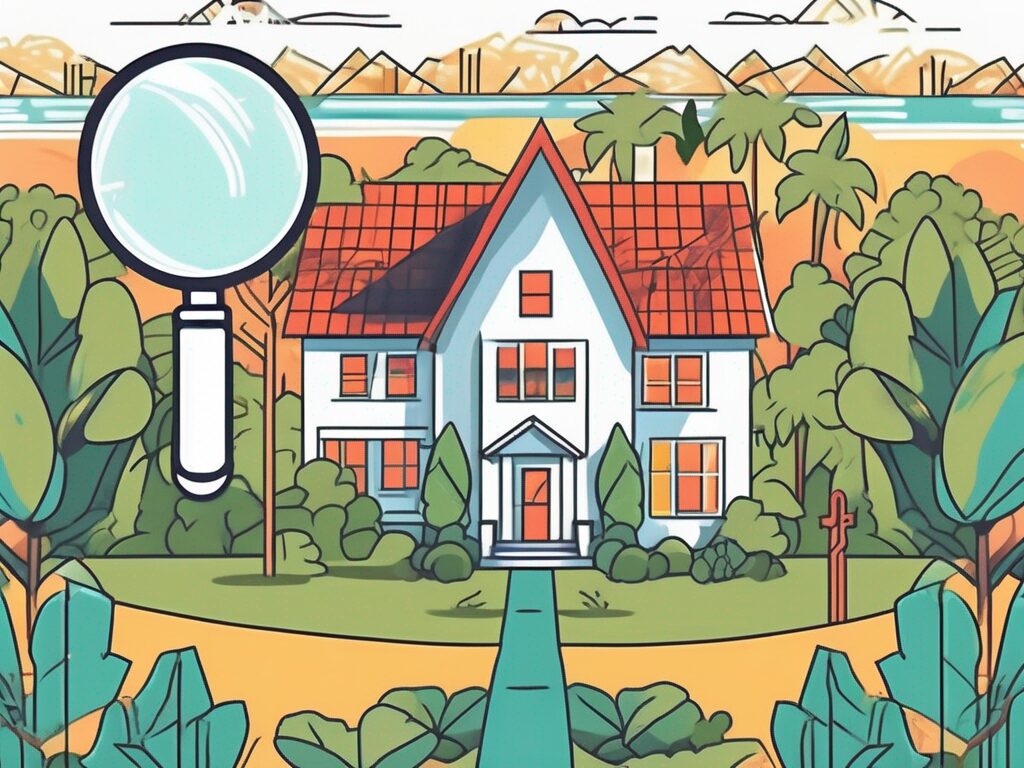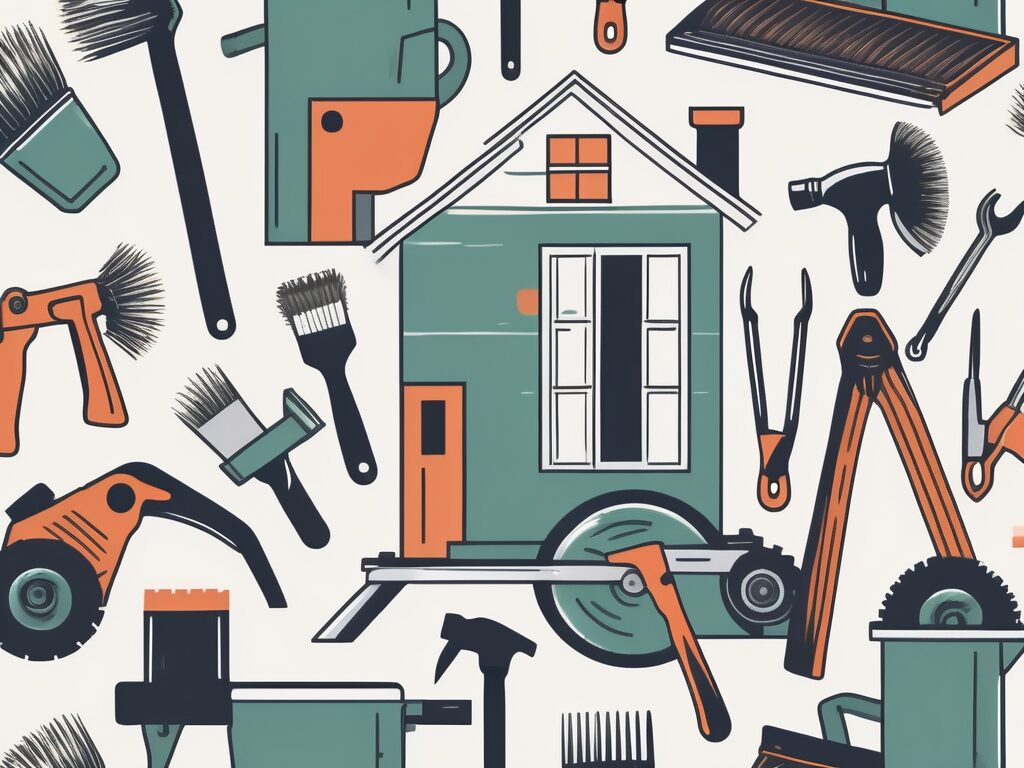
Agent A-Team or Solo Superhero? Finding the Right Real Estate Partner for Your Selling Journey in Wildwood Florida
When it comes to selling your home in Wildwood, Florida,…
January 29, 2024
Congratulations on becoming a new homeowner! Now that you have your own place, it’s important to keep it in top shape. Regular home maintenance is crucial for preserving its value and ensuring a safe and comfortable living environment. In this ultimate guide, we will walk you through a comprehensive checklist of essential home maintenance tasks. We will also explore seasonal curb appeal, the impact of a pool on home value, quick and effective updates to boost your home’s value, and important considerations when dealing with mold while selling a house. Let’s dive in!
As a homeowner, it’s your responsibility to keep your property well-maintained. Regular maintenance not only prevents major issues but also increases the longevity of your home. Here are some essential tasks that should be part of your home maintenance checklist:
Remember, this is just a starting point for your home maintenance checklist. Regularly inspecting and maintaining all aspects of your home is crucial for its overall well-being.
In addition to the tasks mentioned above, there are several other important aspects of home maintenance that every homeowner should consider. One such aspect is the regular inspection and maintenance of the electrical system. It is essential to check for any loose or exposed wires, faulty outlets, or outdated electrical panels. Hiring a licensed electrician to conduct a thorough inspection can help identify potential hazards and ensure the safety of your home.
Another crucial area to focus on is the exterior of your home. While the checklist already includes inspecting the roof, it is equally important to pay attention to the siding, windows, and doors. Regularly check for any cracks, rot, or damage to the exterior surfaces. Properly sealed windows and doors not only enhance the energy efficiency of your home but also protect it from the elements.
When it comes to home maintenance, don’t forget about the landscaping. Maintaining a well-groomed yard not only enhances the curb appeal of your home but also prevents potential issues. Regularly mow the lawn, trim bushes and trees, and remove any dead or overgrown vegetation. Proper drainage is also crucial, so make sure to inspect and clean any drainage systems to prevent water accumulation and potential damage to your property.
Furthermore, it is important to include regular pest control in your home maintenance routine. Pests such as termites, ants, and rodents can cause significant damage to your home if left unchecked. Consider hiring a professional pest control service to inspect your property and implement preventive measures to keep unwanted guests at bay.
Lastly, don’t forget about the interior of your home. In addition to regular cleaning, it is essential to inspect and maintain appliances, such as the refrigerator, dishwasher, and washing machine. Clean or replace filters, check for any leaks or malfunctions, and schedule professional maintenance when necessary. Taking care of your appliances not only extends their lifespan but also helps prevent costly repairs or replacements.
As you can see, home maintenance goes beyond the basic checklist. By paying attention to these additional areas, you can ensure that your home remains in top condition for years to come. Remember, regular maintenance is key to preserving the value and comfort of your home.
When the colder months arrive, it’s essential to pay attention to your home’s curb appeal. Even though winter might make it more challenging to enhance the exterior of your house, there are still plenty of ways to create an inviting and visually appealing facade:
One of the key elements to consider when it comes to winter curb appeal is landscaping. While many plants may not be in bloom during this time, there are still options to add a touch of vibrancy to your garden. Evergreen plants, such as pine trees or holly bushes, can provide a beautiful backdrop with their lush green foliage. Additionally, you can opt for colorful winter flowers like pansies or winter jasmine to add pops of color to your outdoor space.
Another aspect to consider is exterior lighting. With the shorter days and longer nights, installing outdoor lighting can enhance the beauty of your home while also increasing safety. Strategically placed lights can highlight architectural features, illuminate pathways, and create a warm and welcoming atmosphere. Whether you choose traditional wall-mounted fixtures or solar-powered stake lights, the right lighting can make a significant difference in your home’s curb appeal.
When it comes to creating a festive atmosphere during the colder months, decorative accents play a crucial role. Hanging festive wreaths on your front door or windows can instantly add a touch of holiday cheer. You can also consider installing outdoor ornaments, such as light-up snowflakes or a charming winter-themed garden gnome. These decorative accents not only make your home visually appealing but also create a welcoming ambiance for visitors and passersby.
In addition to the visual aspects, it’s important to prioritize safety and accessibility during the winter months. Clearing snow and ice promptly from your walkways and driveways is essential to prevent accidents and ensure that your property remains accessible. Investing in a good-quality snow shovel or a snow blower can make this task easier and more efficient. Additionally, applying ice melt or salt can help melt ice and provide traction, making it safer for both you and your guests.
By incorporating these seasonal curb appeal tips, you can transform the exterior of your home even during the colder months. Remember, a well-maintained and visually appealing facade not only enhances your home’s overall appearance but also creates a warm and inviting atmosphere for you and your guests.
If you are considering buying a home with a pool or planning to install one, it’s essential to understand the impact it can have on the property’s value:
Owning a pool can be a significant asset, providing you with a luxurious and enjoyable space for recreation and relaxation. Imagine spending hot summer days lounging by the pool, hosting pool parties with friends and family, and enjoying the soothing sounds of water. The addition of a pool can transform your backyard into a private oasis, creating a resort-like atmosphere right at home.
However, it’s important to consider the following factors:
Ultimately, the decision to buy or install a pool should be based on your personal preferences, lifestyle, and budget, considering the potential impact on home value. It’s important to weigh the benefits of having a pool against the associated costs and market factors. A pool can enhance your quality of life and provide endless hours of enjoyment, but it’s crucial to make an informed decision that aligns with your long-term goals and financial situation.
If you’re looking to increase your home’s value without breaking the bank, consider the following updates:
These updates can make a significant difference in how your home is perceived and increase its value without requiring major renovations.
Let’s dive deeper into each of these updates to understand their impact on your home’s value:
A fresh coat of paint not only adds a new layer of protection to your walls but also has a transformative effect on the overall ambiance of a room. Consider choosing neutral colors that appeal to a wide range of tastes and preferences. This will help potential buyers envision themselves living in the space, making it more likely for them to make an offer.
Outdated fixtures can make a home feel old and neglected. By replacing them with modern alternatives, you can instantly elevate the look and feel of your home. Choose fixtures that complement the overall style of your house and create a cohesive design throughout. Whether it’s a sleek faucet in the kitchen or stylish lighting fixtures in the living room, these small changes can make a big difference in attracting buyers.
The kitchen and bathroom are two areas that potential buyers pay close attention to. While major renovations can be expensive, there are several minor upgrades that can give these spaces a fresh and updated look. Consider replacing cabinet hardware with more contemporary options, updating faucets to more efficient and stylish models, or replacing outdated countertops with more durable and visually appealing materials. These changes can make a significant impact on the perceived value of your home.
First impressions matter, and the exterior of your home is the first thing potential buyers see. Enhancing your home’s curb appeal can make it more inviting and appealing. Consider adding landscaping elements such as flower beds, shrubs, or potted plants to add color and life to your front yard. Repainting the front door in a bold and welcoming color can also make a statement. Additionally, resurfacing the driveway can give it a fresh and well-maintained appearance. These small improvements can make a big impact on the overall value of your home.
By implementing these updates, you can make your home more attractive to potential buyers and increase its value without breaking the bank. Remember, even small changes can have a significant impact on how your home is perceived in the real estate market.
Mold can be a serious concern when selling a house. It not only affects the value and marketability of your property but also poses health risks to potential buyers. Here are some important considerations:
Identify and address the source: Before selling, it’s crucial to identify the source of the mold and address any moisture issues. This could involve a thorough inspection of your property, including checking for leaks, assessing the ventilation system, and evaluating any areas prone to dampness. By pinpointing the source of the mold, you can take appropriate measures to prevent its recurrence. Repairing leaks, improving ventilation, and implementing effective moisture control strategies are essential steps in dealing with mold.
Disclose the mold issue: Be transparent about any past or present mold problems in your home. It is important to disclose this information to potential buyers, as failure to do so could lead to legal issues and damage your reputation. Honesty is key in maintaining a trustworthy relationship with potential buyers, and it allows them to make informed decisions about the property.
Obtain professional remediation: If the mold problem is extensive or if you are unsure about how to handle it, it is best to hire a professional mold remediation company. These experts have the knowledge, experience, and equipment to safely remove mold and restore your property to a healthy condition. Professional remediation ensures that the mold is effectively eliminated, minimizing the risk of future problems.
Provide documentation: Keep records of any mold remediation and repair work performed. This documentation can provide reassurance to potential buyers and demonstrate that the issue has been resolved. Include details such as the dates of remediation, the methods used, and the certifications of the professionals involved. By providing comprehensive documentation, you can instill confidence in buyers and alleviate any concerns they may have about the property’s history with mold.
Dealing with mold before selling a house requires prompt action, transparency, and professional remediation to ensure a smooth and successful sale. Taking the necessary steps to address mold issues not only protects the value of your property but also safeguards the health and well-being of potential buyers.
As a new homeowner, it’s crucial to prioritize home maintenance to protect your investment and create a safe living environment. By following the ultimate home maintenance checklist, addressing seasonal curb appeal, understanding the impact of a pool on home value, implementing quick and effective updates, and dealing with mold when selling a house, you’ll be well-prepared to maintain and enhance your home. Remember, regular maintenance and addressing issues promptly can save you time, money, and headaches in the long run. Here’s to happy and fruitful homeownership!

If you want the Richr team to help you save thousands on your home just book a call.
 Book a call
Book a call